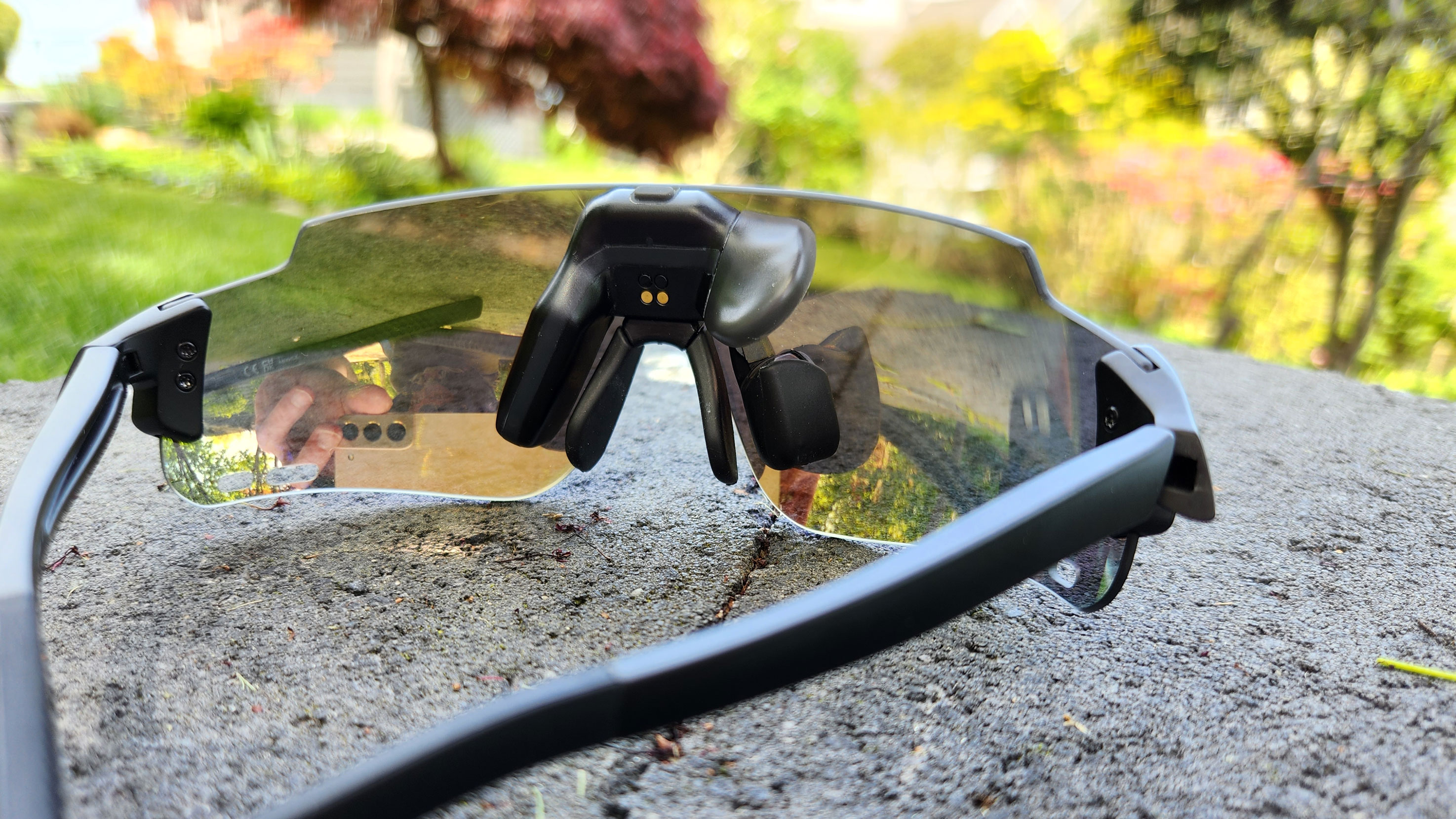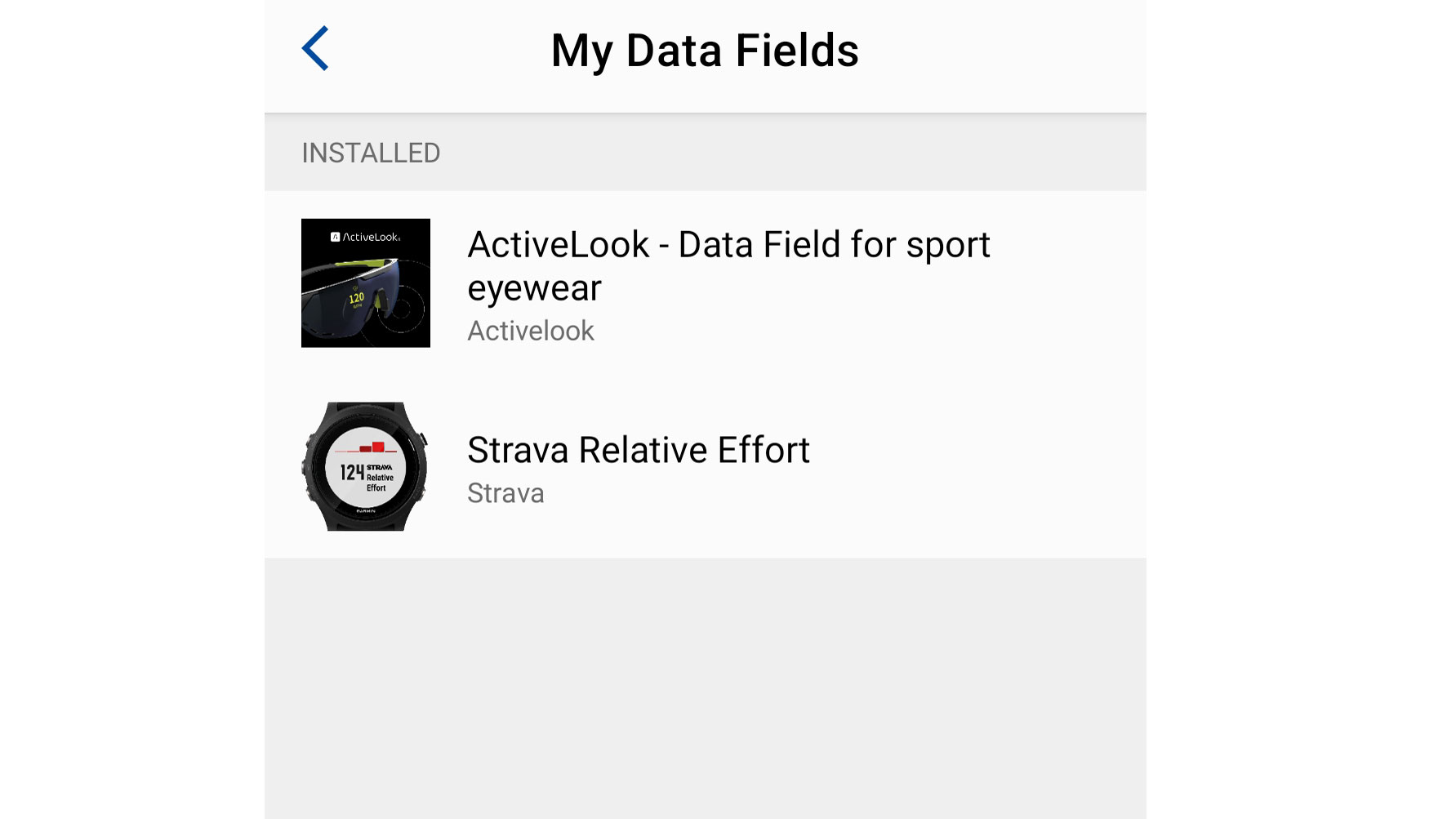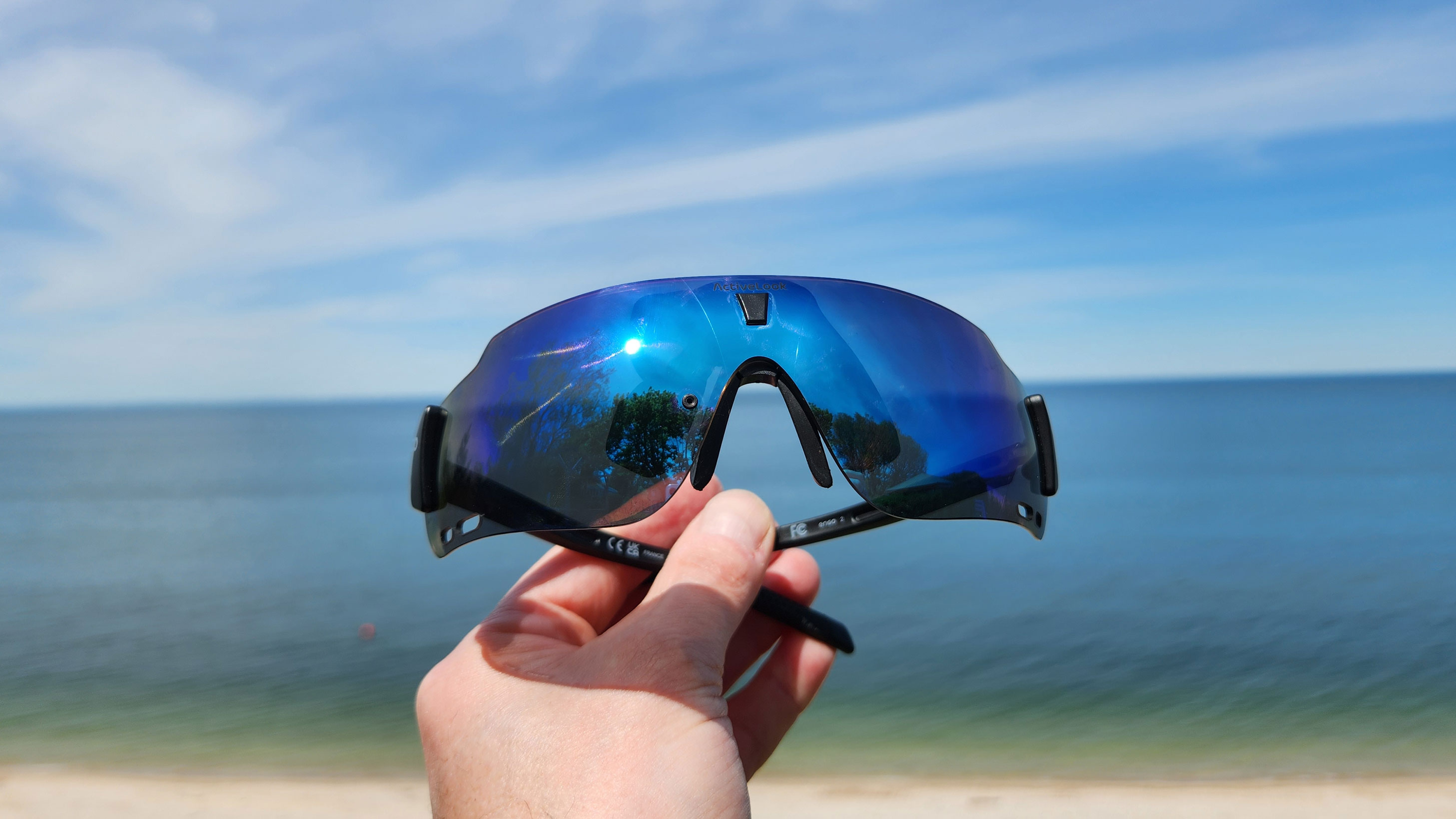TechRadar Verdict
More than a proof of concept, the Engo 2 provides exactly the right tech to give an athlete an edge. But it’ll take some more polish to turn this raw material into a real gem. The display itself is bright, the glasses are cool, the battery life is better than my Garmin smartwatches. But the app! Digging into ActiveLook is like jabbing a pen in my eye. And the fact that the polish is missing frustrates: The power button and charging cable are afterthoughts, and the manual hasn’t been thought of yet.
Pros
- +
Design beautifully conceals the data screen
- +
OLED screen is visible even in bright sun
- +
Watch setup was seamless
Cons
- -
Configuration with Garmin is near impossible
- -
No navigation with Garmin, Apple
- -
No manual, and charging cable is an afterthought
Why you can trust TechRadar
Engo 2: One minute review
My calves are aching, and sweat is running down my back and soaking my shorts. I can feel my pulse in my neck: I’m not going a mile a minute, but my heart sure is. Or am I? I flick my eyes to the display in the corner of my mirrored sunglasses to check my splits and heart rate. It ain’t great, but I’m on pace still. For now, anyway.
The display is the important part of the Engo 2 augmented reality glasses, which resemble Arnie’s shades from the Terminator flicks but house a secret. Tucked in around the nose piece is a monochrome OLED display that beams stats from your bike computer or smartwatch directly onto the lens in front of your eyes.
It’s like the head-up display fighter pilots use, and it’s made by one of the top suppliers. I’m wearing tech designed for F-15 pilots. I am invincible.
Other augmented reality glasses – like the Nreal Air or Virture One, or even the prototypes we’ve seen from Xiaomi and TCL and Lumus – aim to be platforms that do it all, offering directions, integration with your virtual assistant, the vast database of the Internet at your fingers. They also threaten location-based advertisements (“McDonald’s is just ¼ mile away. How about half price McNuggets?”), which feels as intrusive as it is inevitable. The Engo does one thing and one thing alone: Real time data for endurance athletes.
“We’re not here to facilitate a new advertising context,” Mark Prince, GM and Chief Commercial Officer for the company told me. “We’re here to make people faster, better, smarter.”
It’s a glimpse of the future, the first AR solution that connects directly to the Apple Watch. It also retails for $329.95 – a fair bit of money for sunglasses. Does Engo 2 deliver on that promise? Can it make me a better runner?
Component | Value |
Weight | 41g |
Lens material | Polycarbonate |
Connection | Bluetooth 4.2 |
Projector | Monochrome Micro OLED |
Battery life | 12 hours |
Charge time | 3 hours, proprietary USB charger |
Engo 2: Price and availability
Currently, the Engo 2 is available to purchase directly from the Engo website in the US and Europe. Engo 2 is available for in the US for $329.95, and in mainland Europe for €329.00 euros. Although the Europe store ships to the UK, the glasses are not currently available in Australia.
Sign up for breaking news, reviews, opinion, top tech deals, and more.
Engo 2: What's in the box

- Two carrying cases
- One charger
- No manual
The Engo 2 glasses come with a fairly comprehensive collection of components. There’s the glasses, of course, as well as a cloth travel sleeve and a rigid case. The rigid case is quite well designed, with cut outs for the glasses and a spot to store your cords. There’s a microfiber cloth, cleaning brushes to get the gunk around the display components, and a somewhat janky power cord -- more on that later. There’s also a safety manual for some reason, but no user guide.
This absence became a real sore spot for me. A manual handily details the features and functions of a product, walks you through setup, and so on. Somehow, Engo hasn’t made one. There are detailed YouTube videos for Android and iOS set up, and help pages online. These are not a manual.
- Score: 3/5
Engo 2: Design and display

- Comparable to ordinary sport glasses
- Hardware neatly concealed
- Power button is an afterthought
From the front, the Engo 2 glasses look more or less like ordinary sports sunglasses, with a mirrored, wrap-around sun visor and black or white plastic temples (I had black). The glasses themselves are state of the art polycarbonate. Turn them around to put them on and you’ll see the magic: Tucked in around the nose bridge is a tiny micro-OLED projector, mirror system, and batteries to power them.
Put the glasses on and you will notice this hardware, but not really by much. Just place your index fingers on either side of your nose and you’ll see that they mostly vanish; the Engo’s hardware works in the same way. Yes, it’s there, but it’s not as intrusive as you might think. Within a day I had forgotten it completely.
The glasses weigh 36 or 41 grams, depending on whether you’ve got the large, full coverage lenses or the slightly smaller streamlined model. (I’ve been testing the large model.) That’s about as much as a standard pair of Oakleys, Prince told me. They feel a bit heavier to me, but not much. But the weight is definitely off center, meaning the glasses will slip down your nose and off your face if you aren’t careful. To offset that, the company includes a bungee cord that slips snugly over the temples and cinches behind your head. It’s a perfect solution.
A bit of background on the display: The Engo 2 glasses come from MicroOLED, which is the largest manufacturer of micro OLED displays outside of Asia, and the second largest globally in certain markets, notably military supply. The company’s displays are in use in most western military organizations today, in things like head-up displays, night vision, scopes, and so on, Prince said.
“It’s kind of a Meow Mix thing. The cats ask for it by name,” he told me. Engo is a wholly owned consumer subsidiary, designed to promote and use these screens in other ways. And they should! Micro OLED screens consume radically less power than micro LED displays, yet most of the big tech initiatives that you read about tend to use micro LED. The power consumption is the reason other advanced eyewear is bulky or has an external battery pack.
At CES 2023, several companies touted AR glasses that use waveguides, wherein a tiny LED beams light through several sets of mirrors embedded in the lens that expand it to fill your field of view. So mirrors, but really, really smart mirrors. “There are two approaches to waveguides,” Dave Goldman, VP of marketing for Israeli-based Lumus, told me. “One is called diffractive, and that’s the other guys. And I mean everybody else.” Everybody else includes the Vuzix Ultralite, Nreal Air, and Virture One. The Lumus Z-Lens prototype uses reflective waveguides, which are much more power efficient.
But they’re all power hogs compared with Micro OLED, a proven tech that exists today. Again, it’s what the military guys use. Sure, LED is brighter, but Micro OLED is bright enough, Prince says. The monochrome display in the Engo 2 glasses was perfectly visible even in bright sunlight, and the glasses don’t require any sort of external power supply. Battery life: 12 hours, Prince says. I’m sold.
- Design score: 4.5/5
Engo 2: Features and setup

- Apple Watch works beautifully
- ActiveLook software needs work
- Not enough support material
Today’s athletes mostly use Apple Watch or Garmin devices, although there’s no shortage of people with Suuntos, Fitbits, and so on. Depending on whether you’re Team Apple or Team Android, you’ll find Engo to be either super simple to set up or maddening as all get out. I set up my Engo 2 glasses with both, and lived to tell the tale.
In both cases, start by downloading the ActiveLook app. ActiveLook comes from MicroOLED as well, but it’s a third, separate company from the same folks with an API and an SDK and customers of its own. ActiveLook is essentially the bridge between the smart glasses and your sensors, and Prince says the company thinks it could be a platform to itself.
Using ActiveLook with an Apple Watch is a snap: download, pair, and you’re off to the races. Using it with a Garmin watch is like trying to drink scalding hot coffee on a roller coaster. You can see what’s going on, but dear god, why is it happening? The problem lies in how Garmin surfaces information from devices like the Forerunner 945 I rely upon. Info from the smartwatch is broken down into data fields, which the Engo 2 displays on screens.
By default, the ActiveLook app and Engo 2 come configured with three sets of data fields; one set of defaults, a set for running, and a set for cycling. A carefully concealed page on the ActiveLook.net site reveals how to configure the dashboards. Buried deep within the ActiveLook app is a configuration page that lets you adjust the datafields being passed to the screen, by looking up codes on that webpage. The codes are listed not in numerical order but by type of data (power, heart rate, speed and pace, and so on).
Any sane human being would long since have thrown a hammer through a plate glass window. Seriously, I’ve reviewed motherboards that have clearer explanations of jumper settings. I’d have liked to see more information than that supplied by Garmin or Apple, beyond pace, time out, and distance. But navigation is only possible with Suunto.
- Features score: 2/5
Engo 2: Performance and ease of use

- Easy to start and connect
- Gesture controls are so-so
- Display is very legible
Press the power button right before your run and the Engo 2 glasses connect instantly, every single time. And once I started running with the Engo 2 glasses, I found the information to be super handy. There’s a dirty secret to smartwatches: Every time you raise your wrist to check your pace or heart rate, you break your stride, slowing you down, throwing off your cadence, and so on. With data directly in front of your face, you merely look to the side and can see it all.
Even at pace, I had no issues checking the screens for information. The glasses tend to sit close to your face, which means they do steam up a bit from body heat, something I anticipate will worsen in the summer. But they’re easy to clean with microfiber cloth or simple soap and water.
The glasses support gestures as a way of navigating between screens of information as well. A keystone-shaped sensor right between your eyes can detect when you pass your hands before your eyes and will automatically step between screens. And here’s where a manual would have come in handy, mentioning to me the existence of the gesture support, how to turn it on, and so on. Nope. There isn’t one.
I had the feature enabled through the ActiveLook app, but somehow it hadn’t been turned on in the eyeglasses themselves. I went back into the app, disabled the feature, and as I had been advised, force-quitted the app and disabled Bluetooth entirely before repairing it with my phone. Rinse and repeat to re-enable gestures, and the feature was suddenly up and working, an odd glitch I suppose.
Gestures work acceptably, though not brilliantly. I sometimes found myself passing my hand before my face twice to switch screens, and swiping only works in one direction you can’t go back a screen.
- Performance score: 4/5
Engo 2: Should I buy?
Value | Comment | Score |
What’s in the box | There’s a wealth of accessories that other companies charge extra for. But no manual? And that charge cable… | 3/5 |
Design | The eyewear looks great, and the hardware package is well concealed, all things considered. The travel case is nicely put together. | 4.5/5 |
Features and software | The ActiveLook software is maddeningly confusing and unintuitive, especially so for Garmin owners. | 2/5 |
Performance | Quick to connect, simple and straightforward, I found it a breeze to use. But gesture controls were a bit temperamental. | 4/5 |
Total | More than a proof of concept, the Engo 2 provides exactly the right tech to give an athlete an edge. A bit more polish could turn this raw material into a real gem. | 3/5 |
Buy it if...
You’re an athlete into data
The Engo 2 is the answer to your prayers, and it works flawlessly.
You run with an Apple Watch
If you use watchOS, the Engo 2 is the perfect companion.
Don't buy it if...
You’re only a casual exerciser
This is a serious device for serious athletes, and it’ll take a serious time commitment to get the most out of it.
Tech scares you
Set up alone can be confusing, and configuration with Garmin is clearly not a strong suit. You’ll need to roll your sleeves up for this one.
After 25 years covering the technology industry, Jeremy Kaplan is a familiar face in the media world. As Content Director for TechRadar, he oversees product development and quality. He was formerly Editor in Chief of Digital Trends, where he transformed a niche publisher into one of the fastest growing properties in digital media. Before that, he spent half a decade at one of the largest news agencies in the world, and cut his teeth in magazine business, long before the birth of the iPhone. In 2019, he was named to the FOLIO: 100, which honors publishing professionals making an industry-wide impact.
